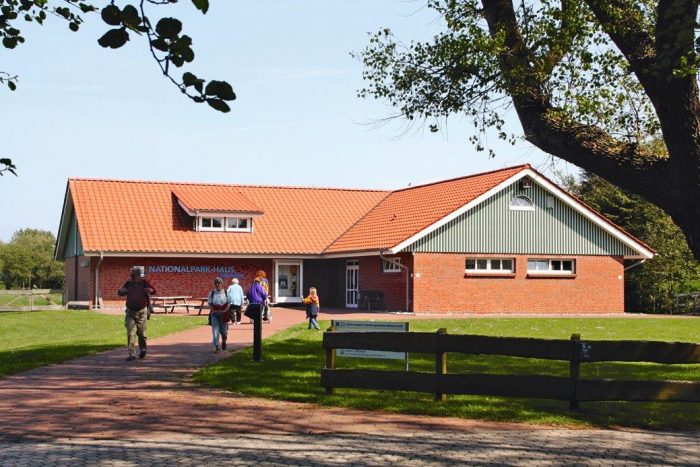What is it?
Hamburg Wadden Sea Biosphere Reserve
The Hamburg Wadden Sea was recognised as a biosphere reserve by UNESCO in 1992 as part of its ‘Man and Biosphere‘ (MAB) programme. It is a marine area with mudflats, tidal flats, dune islands, salt marshes, and the inhabited island of Neuwerk. Here, 30 people live surrounded by a ring dike and in the midst of an old cultural landscape with the over 700-year-old architectural monument, the Neuwerker Turm. The island can be reached from the Lower Saxony mainland by land or by ship, depending on the tides. The island can be reached from the Lower Saxony mainland by land or by ship, depending on the tides.

What is a biosphere reserve?
It is a model region in which ecological, economic and social development should happen sustainably and in harmony with each other. It is not only about nature conservation, but also about the people living here and their work, their income and their future. A biosphere reserve always has four tasks: Nature conservation, sustainable landscape development, and research and education. Zones of different uses are assigned to them, usually these 3: nature conservation or core zone, and maintenance zone and development zone. In the Hamburg Wadden Sea Biosphere Reserve, almost 90% of the area is nature conservation or core zone, the rest is a maintenance zone with development zone functions.
In detail: The nature conservation or core zone covers 105.3 km² (90%). These include the dune islands of Scharhörn and Nigehörn, the salt marshes in the eastern foreland of Neuwerk Island and the surrounding tidal flats and mudflats. The motto here is “Let nature be nature”.
The maintenance zone covers 11.7 km² (10%). This includes the island of Neuwerk (Binnengroden and the northern foreland) with adjacent mudflats and an area in the transition to the Lower Saxony mainland near Cuxhaven.
The maintenance zone covers the functions of the development zone in the Hamburg Wadden Sea. Sustainable use and extensive maintenance of the grassland areas are planned here.
There is a worldwide network of a good 700 biosphere reserves. The Hamburg Wadden Sea Biosphere Reserve is one of 16 in Germany. The two other German Wadden Sea National Parks are also included as biosphere reserves.
Protection
The entire Hamburg Wadden Sea UNESCO Biosphere Reserve is protected under the National Parks Act. Especially for the inhabited island of Neuwerk, there are numerous exceptions and special regulations.
Evaluation
The status of each biosphere reserve is usually reviewed every ten years (evaluation). The last evaluation of the Hamburg Wadden Sea UNESCO Biosphere Reserve took place in 2014. The next regular evaluation is currently being prepared.
Research and monitoring
Permanent environmental observation (monitoring) is carried out in the Wadden Sea according to common standards and methods by Germany, Denmark and the Netherlands. The individual parameters are continuously determined and documented, e.g. mussel beds are walked on, birds and seals are counted, pollutants are measured, plants are determined and the living creatures in the underwater area are recorded. In addition, research projects are carried out.
Environmental education
An important component of environmental education in the Hamburg Wadden Sea, besides the Junior Ranger Programme, are our events and the exhibitions in the National Park House.

Biosphere reserve partner
In this way, businesses and associations that protect the environment and make it tangible for guests are awarded. They undertake to work according to strict environmental rules and thus make their contribution to the preservation of the Wadden Sea. The partner programme for the Hamburg Wadden Sea is currently being set up in cooperation with the partner programme of the Lower Saxony Wadden Sea National Park.
News
In January 2020, the development concept for Neuwerk Island was adopted to secure future prospects for the residents. Currently, various topics from this are being implemented, such as the wattage report, a report on the CO2-neutral island or the construction of a pedestrian connection to the National Park House.
